-A Survey of Key Development Points for Consideration
We live in a time when personal human experience is often sought or labeled as the highest objective. Popular culture consistently conveys that meaning is found in experiences, from education, travel, media, products, and even interpersonal connections. Having an experience is ubiquitous and elemental to human consciousness, intentionally endeavored or passive -it’s unavoidable.

The benefit-based language of the consumer ecosystem is based on generating differentiated experiences. Experience-based products exhibit qualities such as being personalize-able, immersive to the senses, or adjustable over a period of use to elongate interest. These qualities pervade all types of consumer-based products. It’s even taking hold in more business-to-business (B2B) categories thought to be more transactional, with their users evaluating more on cost.
Other experience-based terms have surfaced in the designer’s word-cloud lexicon, such as phenomenology, phygital, or simply being immersive. Regardless of terms, the general course embodies the interest to engage the human senses, flood potent emotion, and deliver something memorable in conscious experience. For the remainder of this piece, I will continue to elaborate on ways to support experience in a broad sense.
The Experience Economy is All Around Us
We have been living in the experience economy for more than two decades. Joe Pine and James Gilmore first described the emergence of the experience economy in their 1999 book, “The Experience Economy.”
Today, 24 years later, the experience economy fundamentally drives business and is core to innovation development. Products and services of all kinds continue to build approaches around the promise of an experience and one better than the competition. At its most ideal, this is about consumers and users opting into an immersive world that engages the senses and hopes to connect with something personal and meaningful.
Experience is personal. If I could substitute a phrase for experience, it would be “personal connection.” Making some product, service, or device connect on an individual level requires creating variation with measured elements of unexpected delight. People are unique and need levels of nuance tuned into them to process and feel experience-based design in their own way.
The following are some relatively recent examples of unique experience-centric products include food services such as HelloFresh, where the activity of making their food is described as “More Choice, Less Boredom,” Quicker Recipes, Less Prep Work, Flexible Plans, and Less Hassle. All these claims imply they know your life and promise you will receive something uniquely fitting and wonderful to your taste.
 Experience naturally extends into digital spheres because of its rapid flexibility, for instance, social media platforms like BeReal, which purport “a new and unique way to discover who your friends are in their daily life.” What could be even more personal and intriguing? -In this case, seeing something remarkably candid and unexpected from them. The focus on experience deepens how we generate novelty and meaningful connections with others.
Experience naturally extends into digital spheres because of its rapid flexibility, for instance, social media platforms like BeReal, which purport “a new and unique way to discover who your friends are in their daily life.” What could be even more personal and intriguing? -In this case, seeing something remarkably candid and unexpected from them. The focus on experience deepens how we generate novelty and meaningful connections with others.
 Take this example in the pharma aesthetics industry; Allergen connects with the self-proclaimed endorsement of “Empowering Confidence.” How someone feels about themselves is undoubtedly individual, varied, and complex; to claim to improve a person’s self-worth promises to understand you and make you even better—intending to deliver on the experience of your elevated confidence.
Take this example in the pharma aesthetics industry; Allergen connects with the self-proclaimed endorsement of “Empowering Confidence.” How someone feels about themselves is undoubtedly individual, varied, and complex; to claim to improve a person’s self-worth promises to understand you and make you even better—intending to deliver on the experience of your elevated confidence.
In Medtech, Johnson & Johnson (J&J) directly points the way for the future with their vision statement, “we unleash diverse healthcare expertise, purposeful technology, and a passion for people to transform the future of medical intervention and empower everyone to live their best life possible.” Here J&J promises something compelling for their patients as individuals, maximizing their well-being and ability to “take life in”.
The experience-based economy guides how products and services are valued by consumers and ultimately evaluated by markets. Every business seeks to communicate on some level of elevated experience. Whether it’s the attentiveness of their services or how engaging their product is to use, it’s about the experience.
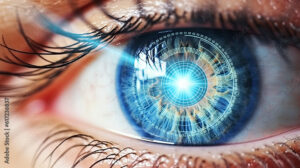
The Good, the Bad, the Forgettable
So, what goes into making a good experience, and what makes others lacking? In my…experience… a good experience is unforgettable, immersive, and brings you into some new connection with your now. Whether a smartphone or a medical device, great experiences get recognized for the beneficial and delightful ways they connect with their users. They make their users feel empowered and elevated in the personal way they interact with the product or device. Users will grasp the notion that it was seemingly built for them. There is no wishing or wanting it to be different or hoping for time to pass faster. It pulls one in and makes each moment better for the interaction.
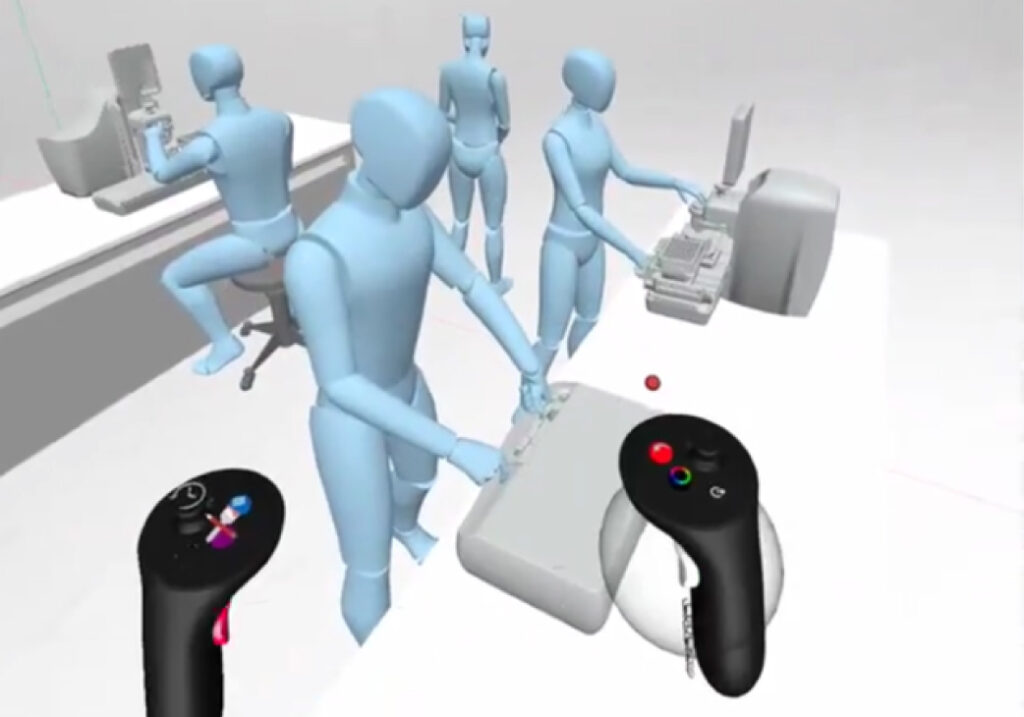
Empathy through virtual contextualization, Force-4 constructs a virtual lab environment to understand device interaction with users and their processes.
Where products go wrong with experience usually centers around labored contrivances when the result or effect of using the product is underwhelming compared to the effort to engage with it. When what was wanted by the user was some increased capability and a riveting personal connection.
What are essential methods and considerations when designing an experience? Below I’ll attempt to convey approaches we value as we create product and device experiences.
Grounding in Some Terms, UI / UX
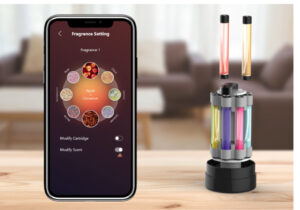
Force-4 derived device experience with digital user interface and physical user touchpoints.
User Interface (UI) & User Experience (UX) design are most associated with digital “experience” UI/ UX are key aspects for creating devices and products that are easy to use and delightful to behold. These are vital components of a user-centered approach; interfaces harness the capability of many kinds of devices, and many are digital interfaces.
For this post’s remaining interest, I will focus on the experience at large with physical products or devices, including those with a digital interface. Overall, designing a product experience is focused on the unique way a solution to a problem is accessed, conveyed, or revealed to the user.
Having the Right Market Proposition to Offer
Firstly, it must be stated that a novel or compelling and differentiated idea must be behind the product or device. The idea can be unique but fleeting or more longstanding with substantive intellectual property. But without some measure of differentiation, your intentions to produce an experience will be reduced to a shadow of a former something else, or at worst, something forgettable and a waste of everyone’s attention.
In early discovery, it is vital to understand who else is operating in your similar product or service space and how your vision stacks up. There are numerous ways to get after validating the differentiated value of an idea, and I’ll leave that to some other posts.
Physical User Interaction, Currently an Underserved Connection in Design
With all the current focus on UI/ UX, physical interaction is a significant sensory engagement need that is easy to overlook. We all interact with touchscreen devices constantly throughout our day, and these are the prevailing means through with we access information on-the-go.
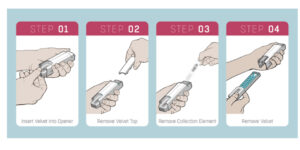
Honing device interaction through simplified steps for bloodspot collection device opener.
Touchscreen graphic user interfaces are highly flexible at feeding us information and bringing a personal spin to our desired content. However, they lack tactile feedback as a cue for calibrating our inputs. The feeling of thick fingers and errant touch inputs is a typical result of this loss in sensory feedback.

Blending a new experience with an old. Force-4 collaborates with YouBody on a new luffa incorporating sustainable and customizable soaps.
There is no getting around our senses, and it’s how we experience the world, and tactile sensation with physical interaction is significant for feedback. It’s pertinent to acknowledge that all interfaces used to be tactile before graphic user interfaces and touchscreen inputs. The interconnectedness of physical and digital inputs is still essential to the overall experience of an interface.
Narrative-Context, Visualization, and Contextual Simulation
The connection between creating experience and storytelling is well established in that a narrative plays out in a setting and occurs through the characters involved. With an experience, there is a device within a context of use and interaction through one or more users. Brands have long acknowledged that placing the user in a central role in the product experience empowered and delighted the consumer.
Consumer Package Good (CPG) companies are well established in magnifying the connection of the consumer to product experience, sometimes known as The Hero’s Journey. This is where the consumer perseveres and tackles a tough task with a little help from a trusted brand. (The Hero’s Journey also masked the self-serving motives of brand marketing, compelling a purchase but making the product about the user and not the brand. Something that consumers are keenly aware of; no one likes being sold or, at worst, manipulated.)
One of the ways we look critically at designing experiences is by examining the product or device at its heightened moments of importance, examining what it should do exceptionally well at high times of trial. These moments of importance can be one moment or numerous.
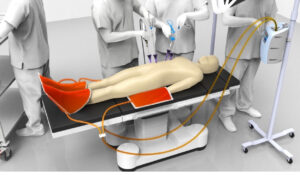
General context of use for an SES/Force-4 designed thermal management device.
It’s evident that life is more a movie than a picture; however, looking at short moments helps bring the necessary focus against the potential for vast nuance. The key is clearly defining how a particular situation will challenge the user and how the device as a solution can be up to its tasks. This examination can help bring out a design’s defining features and benefits. We often use simple 2D storyboard scenario communication initially. As more complexity is shaped, we use virtual and physical prototyping tools to bring immersive context to get closer to the experience.
Brand Design Language as Unique as Your Business
Think of design language as a business’s unique way of signaling its experience, a signature. Many types of Brands think of themselves as purveyors of unique experiences even though they do so in crowded categories. There may be other products or services like this one, but this experience is this particular brand by the unique way it looks and behaves. A Brand design language seeks to own a specific way a product connects with users and is perceived through the user’s senses.
When possible, each primary sense is considered uniquely and functions in concert with other senses to deliver a unique amalgam. Much of design language occurs visually and tacitly, but some experiences go to great lengths to merge two or more senses for a distinctive calling card. Even the operations and layout of digital user interfaces also represent brand design language. The differing operating systems between Apple, Google, and Microsoft have their dedicated users, and it often comes down to how these systems appeal to the logic and senses of their users.
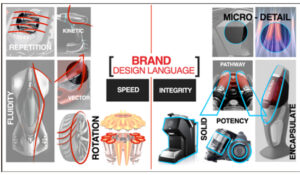
In addition, the Cone-of-Vision is a useful framework for organizing the hierarchy of design language assets and evaluating how a product will be considered at a distance, close-up, and hands-on. Some of the more dynamic aspects of a Design Language consider ways to change over time or be customized.
Prototyping and Building Fidelity to Demonstrate Design & Technology
A cornerstone of Design Thinking is the recursive process of prototyping. Prototyping entails taking an idea and building a demonstrative proof-of-experience concept. There are often compounding levels of fidelity in these prototypes and approaches that isolate subsystems to construct a functioning whole eventually.
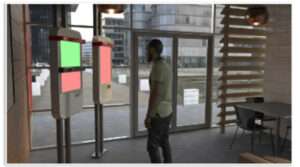 As a companion to prototyping, Force-4 with SES is a unique market leader in using simulation throughout development; we are hyper-vigilant about simulation to influence physical prototyping and reduce cut-and-try approaches. We often utilize virtual scenario modeling to evaluate the functionality and user experience in the ever-advancing need for speed to market. Predictive methods cut down on physical iterations and accelerate the productivity of prototypes and the product development process.
As a companion to prototyping, Force-4 with SES is a unique market leader in using simulation throughout development; we are hyper-vigilant about simulation to influence physical prototyping and reduce cut-and-try approaches. We often utilize virtual scenario modeling to evaluate the functionality and user experience in the ever-advancing need for speed to market. Predictive methods cut down on physical iterations and accelerate the productivity of prototypes and the product development process.
Creating a real and manufacturable experience from the ground up typically follows in step with the completeness of the technologies involved in the device and its manufacturing means. The systematic classification of Technology Readiness Levels or TRLs developed by the DOD and NASA for rapidly converting science into usable technology is a valuable tool in identifying the gap between the proposed experience and its ability to be demonstrated repeatedly and reproduced consistently in the physical world. https://online.fliphtml5.com/jsgdw/izhz/
 Typically, the desired product or device experience forms a significant part of the initial strategy for a product development initiative. Technology is rarely fully developed to engage with its end user initially. So TRLs, have delineated boundaries that assist in acknowledging how far a technology is relative to its needed end functionality goals and manufacturability. In the innovation and product development game, getting ahead of your true understanding of where you are in development is easy.
Typically, the desired product or device experience forms a significant part of the initial strategy for a product development initiative. Technology is rarely fully developed to engage with its end user initially. So TRLs, have delineated boundaries that assist in acknowledging how far a technology is relative to its needed end functionality goals and manufacturability. In the innovation and product development game, getting ahead of your true understanding of where you are in development is easy.
TRLs serve as sobering guardrails against overconfident human enthusiasm and focus on adherence to a necessary physics-based product realization path.
The Complexities of Prioritizing User Experience in Product Design
So, what would happen if more products and devices led with truly differentiated experiences? What makes leading with experience so difficult? In short, many more dimensions exist to bring a product to market and to create success. As any seasoned innovator, device, or product developer will tell you, numerous stakeholders in the product lifecycle must be harnessed and integrated.
Suzanne Labarre for Fast Company sums stakeholder considerations up well. “For design to make a truly significant impact, it has to meet the needs of a vast web of stakeholders, including customers, employees, suppliers, communities, the environment, and, of course, shareholders. For most stakeholders, the product experience is only part of the total package for success. For instance, design experience can’t compete with logistics; consumers can’t buy what is not there or is not cost-effective to make available.”
However, designing new and compelling experiences still holds power to create gravity for the whole business machine with new demand and topline growth. When brands and businesses lead with breakthrough experiences, their consumers and users deepen their connection to the brand, and the brand is rewarded with earned trust and the attention of their buyers to potentially pick up the next innovative experience.
AUTHOR

- Jason Phillips, Group Creative Director of Force-4. An innovation and product development focused division of Stress Engineering Services. His career experiences span innovation in branding, devices, product development, wearables, and CPG.
Ref: B009-UIUX_Innovative User Experience in Product Design
How to Use the Hero’s Journey in Marketing — LINUS (thelinusgroup.com)
What Is Brand Language? (smartcapitalmind.com)
https://www.proko.com/community/topics/perspective-question-cone-of-vision
PRODUCT DESIGN LANGUAGE: WHAT IT IS & WHY YOU NEED TO CREATE A MEANINGFUL ONE (thrivethinking.com)
https://online.fliphtml5.com/jsgdw/izhz/
https://www.allerganaesthetics.com/
https://apps.apple.com/us/app/bereal-your-friends-for-real/id1459645446
https://www.fastcompany.com/90779666/why-corporate-america-broke-up-with-design
Keep in touch with us.
Sign up for our newsletter.




